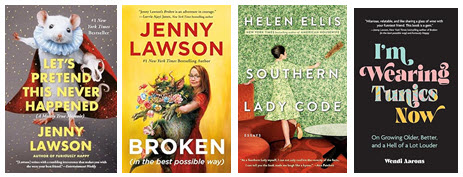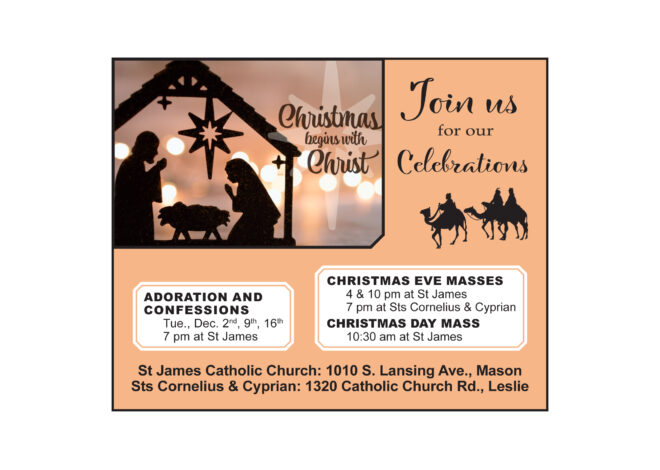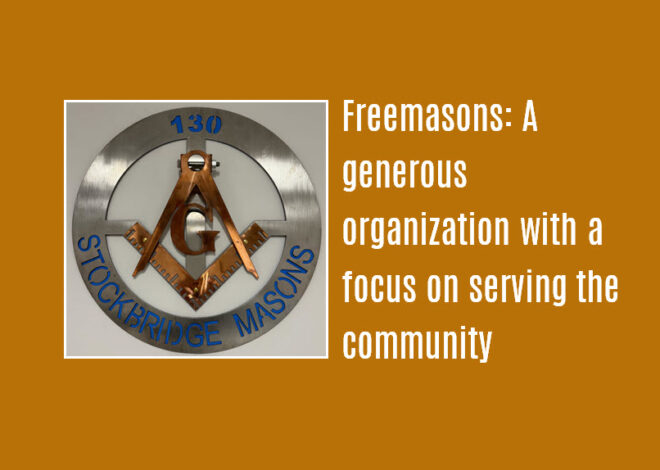
Erma Bombeck paved the way for these Gen-X humor writers
by Mary Jo David

Lately, when visiting some older friends and family, I’ve started taking short essays or poems I can read to them. In most cases, these visits are with people who can’t or don’t read anymore, and they seem to enjoy the selections I take with me.
These visits prompted me to go back to old Erma Bombeck columns to find short, light reading I could share. For those too young to remember, Bombeck was a humorist who wrote a syndicated column and many books. Her primary audience consisted of moms—at that time a majority of them were stay-at-home moms. Bombeck’s hilarious, down-to-earth stories about trips to the ER in her pajamas and last-minute costume requests for school programs made everyone laugh—not just the moms. Personally, I think Bombeck was one of a kind, but lately, I found myself asking, “Who are the Erma Bombecks of the new millennium?” It turns out, a number of Gen-X humorists write for the middle-age, female audience. And whether those authors and their audiences have kids or not, readers are drawn to their skillful and humorous depictions of what it’s like to be a woman in the 2000s. Admittedly, that’s also code for “watch for liberal use of the ‘F’ word,” so consider yourself warned. (Let me add, these are not the selections I take when I make my visits to read to elderly family and friends.)
If you’ve read Jenny Lawson’s books you know they’re not the “wholesome” reading that the old Bombeck books provide. But the reality is: It’s 2024, and June Cleaver doesn’t live here anymore! Two of her books, “Let’s Pretend This Never Happened” and “Broken (in the best possible way)” have readers laughing out loud within minutes of starting either book.
Mixed in with many laugh-out-loud moments are some truly sad times as well. Lawson, who suffers from depression, anxiety, and rheumatoid arthritis, doesn’t shy away from these realities. Writers like her share these moments in a way that only skilled humorists can while still keeping the reader engaged. So, in “Let’s Pretend,” besides sharing about growing up in a household with baby raccoons dressed in homemade pajamas that live in the bathtub, you also learn they had the baby raccoons because her dad, a taxidermist, had killed the mother raccoon. In “Broken,” you laugh with her about how she regularly loses a shoe while she’s wearing it, and you also stay with her as she describes her real-life experience with transcranial magnetic stimulation (TMS), a treatment for depression.
“Southern Lady Code,” by Helen Ellis is a fast, funny read. Like Lawson’s books, Ellis will have you laughing right out of the gate. Both women write from their life experiences; however, where Lawson’s books mix funny hilarious with sad, Ellis interjects a little bit of “ewww” in the LOL moments she shares, especially the first one. Stay with her; the laughs far outweigh anything gross.
Each chapter is a short stand-alone essay, but throughout the book Ellis weaves a thread of what it’s like to “adult” in New York City after being raised in the South. Turns out you can’t take everything Southern women say at face value. Her interpretations of Southern lady code are interspersed throughout the book—and quite funny. I also appreciated that Ellis is open about the decision she and her husband made not to have children, making her life experiences much different from Erma Bombeck’s. Of course, if I truly appreciated Ellis’ take on life, I’d have immediately sent a thank-you note to the friend who gave the book to me, and I just realized, I did not. (Read the book, you’ll understand!)
The title of Wendi Aarons’ book, says it all—”I’m Wearing Tunics Now: On Growing Older, Better, and a Hell of a Lot Louder.” If I was smart, and paying attention to word count (which I never do), I’d end here. But I’d be shortchanging Aarons and the creative spin she puts on what it’s like to surpass age 50. She doesn’t start there; she begins with a lengthy explanation of the horrors of turning 30. As she eventually makes her way to chunky heels and twinsets, then conference wear and—as the title suggests—tunics, Aarons is quite relatable to many woman on the fringe or full-into middle age, as long as you can handle snark. From single womanhood to stay-at-home-mom, to political activist, it turns out, with her evolving wardrobe, Aarons eventually finds her voice and her confidence, and she uses them—loudly. On the bright side, although she’s middle-aged, Aarons is “still on the right side of the dirt, as they say in Texas.”
All four of these selections are fun reads, especially if you’re a woman in the vicinity of middle age (or older) and as long as you can handle coarse language and cutting-edge humor.



